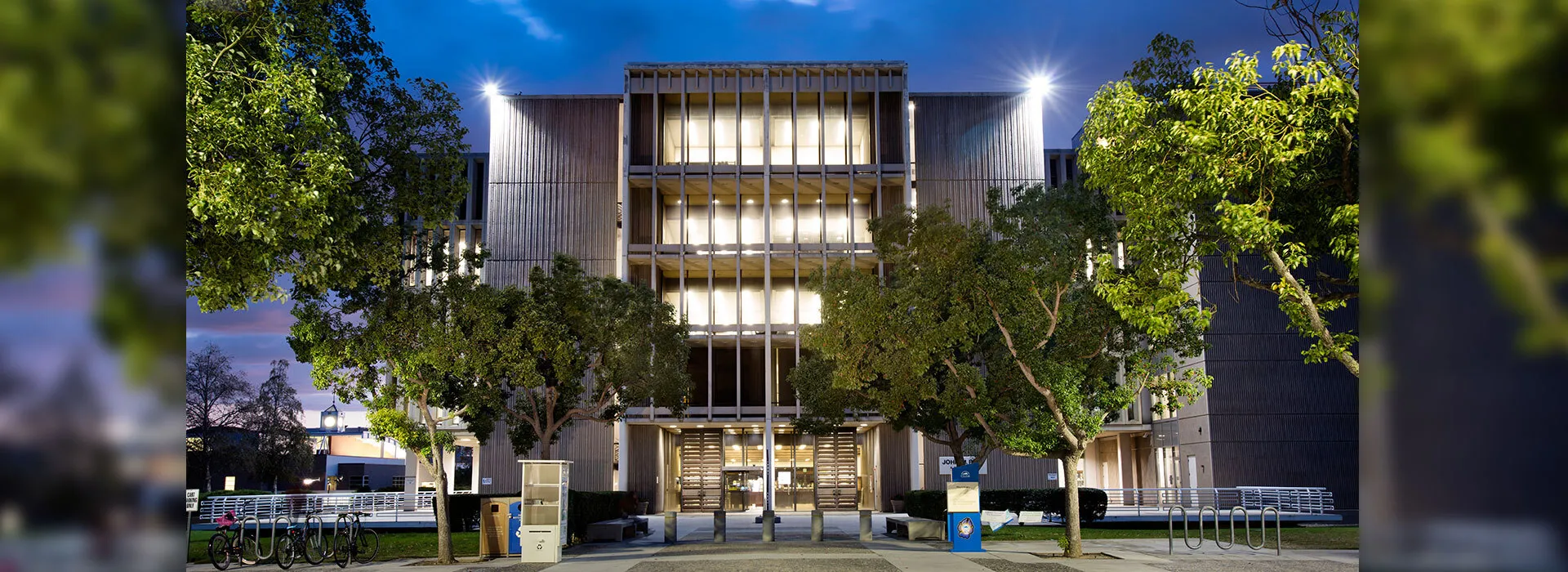
The Robert and Frances Fullerton Museum of Art at Cal State San Bernardino will present three new exhibitions of photography from Nov. 23-Feb. 13.
These three solo exhibitions by artists Lewis deSoto, Tim Portlock and Sant Khalsa present unique and compelling visions of the Inland Empire landscape. Through the artists’ distinctive photographic approaches and styles, they attempt to show new perspective on the place we call home. An opening reception for these exhibitions was held, Nov. 21.
In Lewis deSoto’s “Empire” curated by artist and CSUSB professor emerita Sant Khalsa, he explores the sublime landscapes that encompass so much of southern California, from snow-capped mountains to blistering desert. In this series, deSoto has returned home to rediscover the place where he came of age as an artist and to uncover personal memories and cultural history deeply rooted in the land of his ancestry.
deSoto’s images of the Inland Empire are presented in large-scale panoramas, some over eight feet long. These panoramas are created by taking hundreds of small images which are then stitched together using software. In a sense, these panoramas mirror the overwhelming data of a living society: houses, freeways, industry and weather come together in a chaotic whole.
deSoto is an American artist of Cahuilla Native American ancestry. Born in the Inland Empire, deSoto earned his B.A. in studio art from the University of California, Riverside and his M.F.A. from Claremont Graduate University. deSoto has exhibited widely across the United States and abroad. His work is included in the collections of the Los Angeles County Museum of Art, the California Museum of Photography, the Orange County Museum of Art, the Museum of Modern Art, New York, and the Seattle Art Museum.
In “C.ASH_4_Gold,” Tim Portlock uses 3D special effects and computer game authoring software to create still images of post-industrial cities using the conventions of 19th century American landscape painting to explore concepts such as freedom, individualism, ruggedness and industriousness. Portlock’s interest in San Bernardino was sparked after the city earned the title of the “foreclosure capital” of the United States after the 2008 economic downturn. Portluck explored the structures of San Bernardino, which harken to expectations that are very different from the present and express a range of current-day social dynamics.
Portlock is an associate professor in the film and media department at Hunter College, City University, New York. He is a 2011 recipient of a Pew Fellowship and winner of a Festival of Murals prize to commemorate the 1000 year anniversary of Gdansk, Poland.
Prior to this, Portlock exhibited at Pulse New York, represented by the West Collection (2013), Photo Ireland at Broadstone studios (2012) and the Tate Modern as a member of artist collective Vox Populi(2011), Christies London, represented by Philagrafika (2012), the International Guerrilla Video Festival Dublin (2009) and “This is Not a Gateway,” London (2009).
“Intimate Landscapes” is Sant Khalsa’s first series of photographs documenting the southern California landscape. This series, created in 1982-83 after her arrival from New York City, features the vast spaces and rolling hills of the San Bernardino valley area she now calls home. The small scale of these images invite the viewer to take a close look, experiencing the often overlooked beauty of their everyday scenery.
Khalsa is an artist, educator, and curator living in Southern California since 1975. Her artworks and curatorial projects develop from her inquiry into the nature of place and the complex environmental and societal issues present and visible in the landscape of the American West. Her artwork has been widely shown internationally in over 150 exhibitions and has been acquired by permanent museum collections including the Los Angeles County Museum of Art, Center for Creative Photography in Tucson, Nevada Museum of Art, UCR/California Museum of Photography, and others in addition to private and corporate collections in the U.S. and Europe.
She is a recipient of prestigious fellowships, awards and grants from the National Endowment for the Arts, California Arts Council, California Council for the Humanities, Center for Photographic Art in Carmel, and others. In March 2012, she was honored as the first recipient of the Society for Photographic Education Insight Award from the Board of Directors of the SPE for her significant contributions to the field of photography as an artist, educator and mentor. Additionally, she is recipient of the 2015 Society for Photographic Education West Region Honored Educator award. Khalsa is a professor of art, emerita at CSUSB, where she served on the art faculty since 1988, as art department chair from 2003-2012, and is one of the founding faculty of the Water Resources Institute.
About RAFFMA
The Robert and Frances Fullerton Museum of Art is a nationally recognized museum accredited by the American Alliance of Museums. The only accredited art museum in San Bernardino, RAFFMA has accumulated a permanent collection of nearly 1,200 objects focusing on Egyptian antiquities, ceramics and contemporary art. Located at Cal State San Bernardino, RAFFMA houses the largest permanent and public display of Egyptian art in Southern California.
General admission to the museum is free. Suggested donation is $3. Parking at Cal State San Bernardino is $6 per vehicle and $3 on weekends.
The museum is open Monday-Wednesday and Saturday 10 a.m.-5 p.m., Thursday 11 a.m.-7 p.m. and closed Friday and Sunday. For more information, call (909) 537-7373 or visit the RAFFMA website.